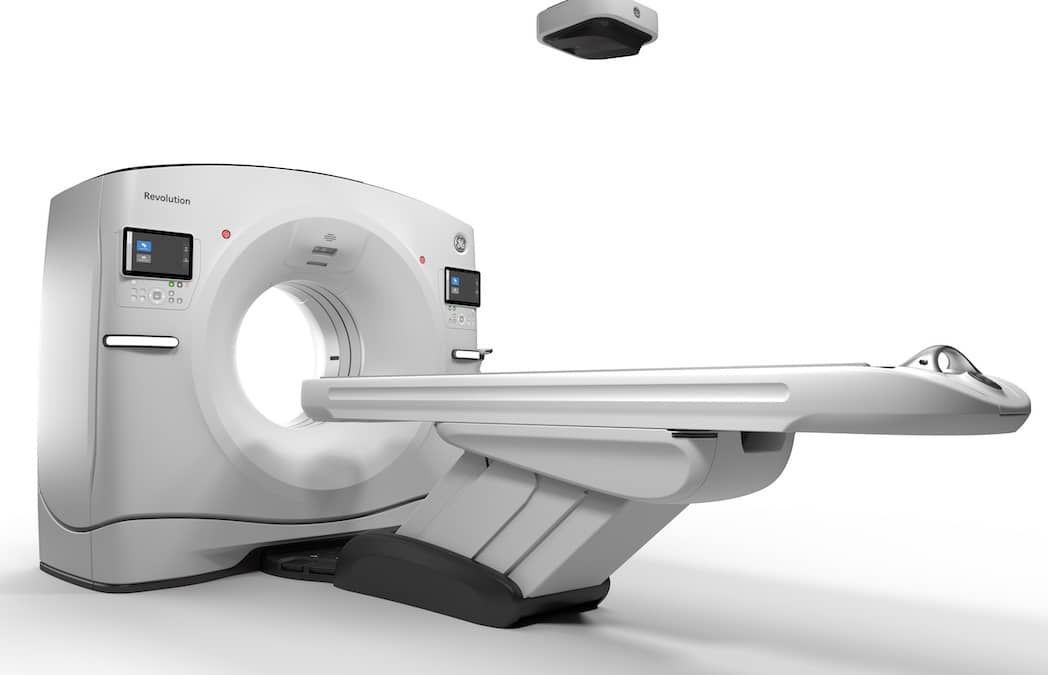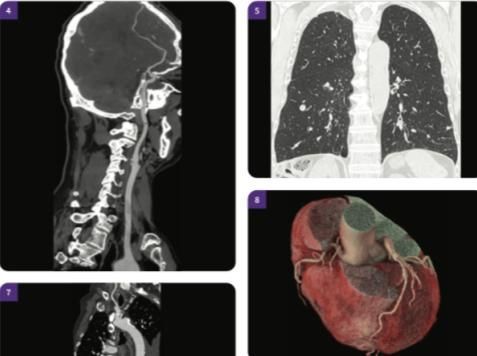CT Scan (Computerised Tomography)
Delta Medical Imaging offer a CT scanner with cutting-edge technology and Al integration. It standardises scan procedures, optimises dose exposure, and enhances efficiency with clear imaging. The system includes advanced features for cardiac, intervention, neuro, and trauma applications.

About the Examination
A Computerised Tomography (CT) scan, also known as a computerised axial tomography (CAT) scan, uses a mixture of X-rays and computer systems to create virtual ‘slices’ of the body without the need for invasive surgery.
CT scans produce more detailed images than traditional X-rays and can also be used to form three-dimensional pictures of internal sections of the body.
What is a CT scan?
A CT scan involves using a large, circular scanner that spins. The CT bed the patient is lying on moves in and out of the scanner, allowing the scanner to take multiple images of the patient’s internal organs and soft tissue.
What part of the Anatomy is examined by a CT scan?
A CT scan can be used to examine every part of the body from the head to the toes, including:
- Internal organs
- Blood vessels
- Bones and joints
What Conditions can be Diagnosed by a CT scan?
CT Scans can be used to diagnose a variety of conditions, including:
- Bone breakages and muscle disorders
- Cancers
- Blood clots
- Heart disease
- Infection
- Kidney and bladder stones
CT scans can also be used to diagnose, guide tests and treatments, and monitor existing conditions.
Why is a CT scan required?
CT scans can diagnose and monitor a number of serious conditions. Doctors also use them to check the precise location of tumours, clots, or soft tissue before surgery or biopsies.
CT scans are also suitable for situations where urgently needed internal images of the body are needed, such as checking for internal injuries after a traffic collision.
What are the Risks and Complications of a CT scan?
A CT scan is a relatively low-risk procedure as it is non-invasive.
However, as multiple images are taken of the body during a CT scan, patients are exposed to more radiation than in a typical X-ray. Our CT machine delivers 25-75% lower radiation doses than normally expected in CT scans.
There is also a very minor risk that patients may suffer from a severe reaction to the contrast medium. Most patients who react develop an itchy rash. Exceptionally rarely, there can be a severe reaction with:
- Low blood pressure
- Anaphylactic shock
- Cardiac Arrest
Allergic reactions to the X-ray dye are usually mild and can be treated with medication on site. However, it is important to let the staff know if you have a known contrast reaction.
What consequences are there if the suspected condition is undiagnosed or untreated?
CT scans are used to detect and diagnose many severe conditions, which, if left untreated, can cause severe or fatal complications.
Early detection and treatment of these conditions can increase the chances of successful treatment and recovery.
Preparation for a CT scan
What Special Diet is required Before a CT scan?
You may be instructed to fast up to four hours before your procedure. Some scans require drinking some oral contrast the hour before the scan to show the bowel more clearly.
What should a Patient Tell the Radiographer Before a CT scan?
Patients should alert the radiographer if they are pregnant, as there is a risk that the radiation from the CT scan could endanger the baby.
You should also tell the radiographer if you are asthmatic, suffer from kidney problems or have any allergies, as these conditions increase the risk of an adverse reaction to the contrast medium.
What to bring for a CT scan
Your doctor may ask you to bring any previous scans or x-rays and any medications you’re currently taking to the procedure.
What to wear for a CT scan
You will be asked to remove any metallic items, such as jewellery, watches, eyewear and belts, as these items can show up on the CT scans. You should also avoid clothes with zippers or metal buttons.
You may be asked to remove any clothing obstructing the area to be scanned and given a medical gown to wear instead, so you should try to wear something comfortable and easy to remove.
How Long will a CT scan take?
The CT scan procedure usually takes between 10-30 minutes to complete.
CT scan Procedure Description
After being escorted to the procedure room, you will be asked to lie on the CT table with your head towards the machine's opening.
For non-contrast CT scans, no injection is needed.
In CT scans with contrast, the radiographer will typically inject the contrast medium through the IV line into the back of your hand or the inside of your elbow.
If your stomach or intestines are being examined, you may be required to either swallow or, more rarely, have the contrast medium inserted via an enema. Most patients find the taste unpleasant, and enemas can result in some discomfort and bloating.
You may also experience the following sensations as the contrast agent moves through the body:
- Warmth
- Mild burning
- A metallic taste or smell
- A temporary urge to pass urine
During the procedure, small patches placed on your chest may connect you to an electrocardiogram (EKG) machine, which monitors and records your heart rate.
You will then be told to lie still while the CT scanner spins, moving up and down as it takes images of your body. The machine will normally make a series of whirring and clicking noises as it works.
At various points, the specialist may talk to you via an intercom, instructing you to hold your breath or keep still.
Post-CT Scan Instructions
What are the Recovery Details?
After the procedure, you will usually be able to resume normal activities immediately. The scan results will be sent to your doctor, who will discuss them with you during your next appointment.
Can I Drive Home?
Patients can drive home after being released from the practice.
COST OF CT SCAN
- Medicare Bulk-billed, no cost to patients




